What does it mean to be self-compassionate?
Self-compassion is treating yourself with kindness, understanding, and care, particularly during times of failure, suffering, or when facing personal challenges. It involves treating yourself with the same warmth, concern, and empathy that you would extend to a friend who is going through a challenging time.
Self-compassion is not about self-pity or self-indulgence. It doesn't mean avoiding responsibility for your actions or ignoring areas in which you need to improve. Instead, self-compassion involves approaching yourself with kindness and understanding, even when you make mistakes or face difficulties thereby fostering a healthier and more positive relationship with yourself.
What are the three elements of self-compassion?
The three elements of self-compassion are:
-
Mindfulness
-
Common Humanity
-
Self-Kindness.
Let's go into detail on each of these elements.
Mindfulness (Connect with your emotions with openness and clarity)
Paying deliberate attention to the present moment, acknowledging your thoughts and feelings as they arise and accepting your experiences without getting caught up in self-criticism, avoidance or getting overwhelmed by them. By cultivating mindfulness, you can become more aware of your inner experiences and develop a non-reactive stance toward your thoughts and emotions.
For example: I'm fully present with my feelings of sadness.
Common Humanity (Recognize that suffering is universal)
Recognizing that everyone experiences struggles, pain, and imperfections in life. Rather than feeling isolated or alone in your suffering, self-compassion reminds you that being human involves facing challenges and difficulties. This perspective helps you understand that you are not alone in your challenges, and it fosters a sense of connection and belonging.
For example: It's comforting to know that I'm not alone in my struggles.
Self-Kindness (Be kind and gentle towards yourself)
Being warm, gentle, and understanding towards yourself, especially during difficult moments. Instead of being critical or judgmental, self-compassion encourages you to be nurturing and supportive of your own emotions and experiences. Instead of berating yourself for mistakes or shortcomings, it involves offering yourself words of comfort and support.
For example: I'm being kind to myself after a setback.
What is opposite of self-compassion?
The opposite of self-compassion is:
-
Self-judgment
-
Isolation
-
Over-identification
Let's understand each.
Self-judgment (opposite of self-kindness)
Harshly judging yourself, being overly self-demanding, and engaging in negative self-talk when facing difficulties or making mistakes.
For example: I made a mistake again; I'm so stupid and can't seem to get anything right.
Isolation (opposite of Common Humanity)
Believing that your struggles and challenges are unique and that others do not experience similar difficulties. This can lead to feelings of loneliness and alienation.
For example: I feel so alone in my struggles; nobody else seems to understand what I'm going through.
Over-identification (opposite of mindfulness)
Avoiding difficult emotions or focusing exclusively on your suffering and getting caught in rumination by dramatizing your situation to a point where nothing else is important.
For example: I can't believe I received that criticism; it means I'm completely worthless and incompetent.
What are examples of self-compassion?
Here are some examples of self-compassion:
When you make a mistake: Okay, I made a mistake, but it happens to everyone. It doesn't define my worth as a person. I'll learn from this and use it as an opportunity to grow and improve.
When you receive negative feedback: Receiving feedback can be tough, but I'll try not to take it personally. It's a chance to improve and grow, and I'll use it constructively.
When learning something new: Learning something new is challenging. Some things I’m able to catch on quickly and some slower. That’s ok. If I stick with it long enough, I’ll get it.
When things don't go as expected: Not everything I do can turn out the way I’d like. The important thing is that I am learning and improving.
Why is self-compassion important?
Self-compassion is important for various psychological, emotional, and even physical well-being reasons. Research has shown that practicing self-compassion can lead to various benefits, including:
-
Reduced levels of stress, anxiety, and depression.
-
Increased emotional resilience and coping skills.
-
Improved overall well-being and life satisfaction.
-
Greater motivation to learn and grow from failures.
-
Better relationships with others, as self-compassion translates to more empathy and understanding for others.
Instead of building self-esteem which is often contingent on achieving success, meeting expectations, and receiving approval from others, develop self-compassion. Self-compassion does not depend on success, achievements, or meeting certain standards. It is available to everyone, regardless of whether they succeed or fail in a particular situation.
When faced with challenges and difficulties, instead of engaging in self-criticism, practice self-compassion. Self-criticism is associated with feelings of shame, guilt, and inadequacy and can lead to increased stress, anxiety, diminished sense of self-worth, and a cycle of negativity that undermines self-confidence and well-being. Self-compassion can foster feelings of comfort, support, and empathy. It helps in reducing stress and building resilience. It provides a healthy perspective on imperfections and fosters a sense of worthiness and self-acceptance.
What are the common misconceptions about self-compassion?
Here are the 10 most common misconceptions about self-compassion:
-
Self-compassion is self-pity: One common misconception is that self-compassion is the same as self-pity or feeling sorry for yourself. In reality, self-compassion is about acknowledging and validating your pain or suffering without getting lost in self-indulgence. It involves offering yourself understanding and kindness, not dwelling in a victim mentality.
-
Self-compassion is selfish: Some people may believe that being self-compassionate is selfish or self-centered. However, self-compassion is fundamentally different from selfishness. It allows individuals to care for themselves, which, in turn, enables them to be more caring and understanding towards others.
-
Self-compassion is weakness: There is a misconception that being kind and gentle with yourself during difficult times is a sign of weakness. On the contrary, self-compassion requires courage and emotional strength to face your vulnerabilities and emotions with openness and understanding.
-
Self-compassion is self-indulgent: Some people worry that being self-compassionate may lead to self-indulgence or laziness. However, research shows that self-compassion actually promotes healthier behaviors and motivation for growth, as you are more likely to support yourself through challenges.
-
Self-compassion means ignoring flaws: Embracing self-compassion does not mean ignoring areas for growth or dismissing personal flaws. Instead, it involves acknowledging imperfections with understanding and responding to them with kindness and a desire for self-improvement.
-
Self-compassion is only for weak people: Another misconception is that self-compassion is only necessary for those who cannot handle life's challenges on their own. In reality, self-compassion is a valuable tool for everyone, regardless of their resilience levels. It helps build emotional resilience and coping skills.
-
Self-compassion is a replacement for motivation: Some may worry that being self-compassionate might lead to complacency and a lack of motivation. However, research suggests that self-compassion can actually foster greater motivation and resilience by reducing the fear of failure and self-criticism.
-
Self-compassion is just positive thinking: Self-compassion is not simply about positive thinking or trying to be happy all the time. It's about being real and honest with yourself, acknowledging both the positive and negative aspects of your experiences, and responding to it with warmth and understanding.
-
Self-compassion is egotistical: Some people may believe that practicing self-compassion means constantly praising yourself or seeking attention. However, self-compassion is about offering understanding and kindness to yourself during difficult times, not inflating your ego.
-
Self-compassion is the same as self-esteem: Self-esteem is often based on judgments of self-worth and can be tied to achievements and external validation. Self-compassion, on the other hand, is about being kind to yourself regardless of achievements and accepting yourself unconditionally.
What is the difference between self-criticism and self-compassion?
Self-criticism vs self-compassion
Self-criticism involves a harsh and judgmental internal dialogue in response to perceived failures, mistakes, or shortcomings. It often includes negative self-talk, self-blame, and self-condemnation. Self-compassion involves responding to ourselves with kindness, understanding, and acceptance when faced with difficulties or when we fall short of our own expectations.
Perspective of self-critical vs self-compassionate people
-
Self-critics often have a rigid and unforgiving perspective towards themselves. They might hold themselves to impossibly high standards and berate themselves for not meeting them.
-
Self-compassionate people take a more balanced and realistic view of their imperfections. They understand that everyone makes mistakes and that it is a natural part of being human.
Response to failures and mistakes
-
In response to failure, self-critics may engage in negative self-talk, feel overwhelmed by shame, and may avoid taking risks in the future to prevent further mistakes.
-
Self-compassionate people respond to failure with understanding and self-kindness. They see mistakes as opportunities for growth and learning and are more willing to try again.
Impact on mental health
-
High levels of self-criticism are associated with increased risk of anxiety, depression, and other mental health issues.
-
Practicing self-compassion has been linked to improved mental health outcomes, including reduced stress, anxiety, and depression.
Emotional impact
-
Self-criticism tends to be associated with feelings of shame, guilt, and inadequacy. It can lead to increased stress, anxiety, diminished sense of self-worth, and a cycle of negativity that undermines self-confidence and well-being.
-
Self-compassion fosters feelings of comfort, support, and empathy. It helps in reducing stress and building resilience. It provides a healthy perspective on imperfections and fosters a sense of worthiness and self-acceptance.
Relationship with others
-
Self-critics may find it challenging to be genuinely compassionate and empathetic towards others because they struggle to extend the same kindness to themselves.
-
Self-compassionate individuals often have more genuine and compassionate relationships with others as they can better understand and empathize with others' struggles.
Self-criticism vs self-compassion examples
Here are 3 examples that demonstrates why self-compassion is empowering and self-criticism can be damaging.
Comparing appearance to others:
-
Self-criticism: I look terrible compared to them. I'm so ugly, and no one will find me attractive.
-
Self-compassion: It's challenging not to compare myself, but I am unique, and my worth isn't solely determined by my appearance.
Feeling anxious in social situations:
-
Self-criticism: I'm so awkward and boring; nobody will want to talk to me. I'll embarrass myself, and everyone will think I'm a total loser.
-
Self-compassion: Feeling anxious in social situations is tough, but it's okay to feel this way. I'll be gentle with myself; many people experience social anxiety.
Struggling with personal goals:
-
Self-criticism: I can't believe I haven't achieved my goals yet. I'm lazy and undisciplined. I'll never succeed in anything I set out to do.
-
Self-compassion: It's okay to face setbacks and challenges on the way to my goals. I'll be patient with myself and celebrate the progress I've made so far.
Why is self-compassion better than self-esteem?
Self-compassion is better than self-esteem because:
-
Self-esteem is the overall evaluation and perception of your own worth and value. It involves judgments about your competence, abilities, and likability. High self-esteem is typically associated with positive self-evaluations, while low self-esteem involves negative self-perceptions. Self-compassion involves being kind, understanding, and caring toward yourself, especially in times of failure, struggle, or suffering. It emphasizes treating yourself with the same kindness and concern that you would offer to a friend who is going through a difficult time.
-
Self-esteem is often contingent on achieving success, meeting expectations, and receiving approval from others. It can fluctuate based on external validation and may be challenged when facing failure or criticism. Self-compassion does not depend on success, achievements, or meeting certain standards. It is available to everyone, regardless of whether they succeed or fail in a particular situation.
-
When faced with failure, people with high self-esteem may react with harsh self-judgment and a fear of losing their positive self-image. Failure can significantly impact self-esteem if it threatens your sense of competence and worth. In the face of failure or mistakes, self-compassion involves responding with understanding and kindness. You recognize that failure is a part of being human and do not overly criticize yourself.
-
Self-esteem can be influenced by social comparison. People with high self-esteem may feel better about themselves when they perceive themselves as more successful or superior to others. Self-compassion encourages you to acknowledge you own suffering without comparing it to others. It recognizes that everyone experiences pain and struggles in life.
-
High self-esteem is often associated with avoiding or denying negative emotions to maintain a positive self-image. This may lead to difficulties in processing and dealing with challenging emotions. Self-compassion involves embracing and validating one's emotions, even difficult ones, without judgment or avoidance. It recognizes that experiencing negative emotions and challenging situations are natural aspects of being human.
-
High self-esteem does not necessarily guarantee positive relationships with others. In some cases, people with inflated self-esteem may have difficulties with empathy and may even display arrogance or entitlement. Practicing self-compassion can lead to more genuine and compassionate relationships with others, as people who are kinder to themselves are often more empathetic and understanding towards others.
Here are some examples of self-esteem vs self-compassionate thinking:
Self-esteem: I must look perfect at all times; any flaw is unacceptable.
Self-compassion: It's okay to have imperfections; I will love and accept myself as I am.
Self-esteem: I need others' approval to feel good about myself.
Self-compassion: My worth isn't dependent on others' opinions; I am enough on my own.
Self-esteem: I'm ashamed of my failures; I must hide them from others.
Self-compassion: Failure is a part of life; I'll be kind to myself and learn from these experiences.
Self-esteem: I'm better than others in this area; they can't match my skills.
Self-compassion: I won't compare myself to others; we all have different paths and struggles.
Self-esteem: I have to be the best at everything to prove my worth.
Self-compassion: I don't need to be perfect; I'm deserving of love and acceptance regardless of my achievements.
How do you develop self-compassion?
To develop self-compassion, you must first be aware that you are struggling and catch yourself when your mind leaps into self-critical thinking. This workbook provides multiple exercises and worksheets to develop self-compassion.
Here are the 10 exercises provided in this self-compassion workbook:
-
Exercise 1: Determine Your Level of Self-Compassion
-
Exercise 2: Build a Mindful Connection
-
Exercise 3: Reframe Your Critical Self-Talk
-
Exercise 4: Bring a Friend to Mind
-
Exercise 5: Practice Thought Defusion
-
Exercise 6: Give and Receive Compassion
-
Exercise 7: Journal Your Experience
-
Exercise 8: Develop Loving Kindness
-
Exercise 9: Learn to Receive Feedback
-
Exercise 10: Record Your Progress
Self-compassion workbook combines different practices involving self-talk, affirmations and mindfulness to help you develop a more compassionate way of relating to your struggles and places in which you get down on yourself.
What is leaves on a stream meditation exercise?
Leaves on a stream meditation exercise encourages you to observe your thoughts without judgment and let them pass, much like leaves floating away on a stream. This can help you develop a healthier relationship with your thoughts and prevent them from overwhelming you. By acknowledging and then letting go of thoughts, especially negative or anxious ones, you can reduce the power these thoughts have over your emotions. This can lead to a reduction in overall anxiety levels.
Here's how it works:
As you do this exercise, observe your thoughts with openness and curiosity. Watch them come and go without reacting to them—judging them, holding on to them, or pushing them away.
-
Find a comfortable position, and either close your eyes or fix your eyes on a spot, whichever you prefer.
-
Imagine you’re sitting by the side of a gently flowing stream, and there are leaves flowing past on the surface of the stream. Imagine it however you like—it’s your imagination. (Pause 10 seconds.)
-
Now, for the next few minutes, take every thought that pops into your head, place it on a leaf, and let it float on by. Do this regardless of whether the thoughts are positive or negative, pleasurable or painful. Even if they’re the most wonderful thoughts, place them on the leaf and let them float on by. (Pause 10 seconds.)
-
If your thoughts stop, just watch the stream. Sooner or later your thoughts will start up again. (Pause 20 seconds.)
-
Allow the stream to flow at its own rate. Don’t speed it up. You’re not trying to wash the leaves away—you’re allowing them to come and go in their own good time. (Pause 20 seconds.)
-
If your mind says, This is stupid or I can’t do it, place those thoughts on a leaf. (Pause 20 seconds.)
-
If a leaf gets stuck, let it hang around. Don’t force it to float away. (Pause 20 seconds.)
-
If a difficult feeling arises, such as boredom or impatience, simply acknowledge it. Say to yourself, “Here’s a feeling of boredom” or “Here’s a feeling of impatience.” Then place those words on a leaf, and let the leaf float on by.
-
From time to time, your thoughts will hook you, and you’ll lose track of the exercise. This is normal and natural, and it will keep happening. As soon as you realize it’s happened, gently acknowledge it and then start the exercise again.
Finally, allow the image of the stream to dissolve, and slowly bring your attention back to sitting.
Gently open your eyes and notice what you can see. Notice what you can hear. Push your feet or lower body into the floor and stretch gently.
Notice yourself stretching.
Welcome back!
Source: Harris, R. (2009). ACT made simple: An easy- to- read primer on acceptance and commitment therapy. Oakland, CA: New Harbinger.
Self-compassion workbook provides "Leaves on a Stream" meditation exercise along with other mindfulness practices to cultivate self-compassion.
What is loving kindness meditation practice for cultivating self-compassion?
Loving-kindness meditation, also known as Metta meditation, is a powerful practice to cultivate feelings of love, compassion, and goodwill, not only for others but also for yourself. When practicing loving-kindness meditation for self-compassion, you direct feelings of warmth and care toward yourself.
Regular practice of loving-kindness meditation can lead to an increase in positive emotions such as love, joy, gratitude, and compassion. It can also help decrease negative emotions such as anger, resentment, and hostility by promoting a more compassionate and forgiving attitude.
Here's how it works:
1. Find a quiet and comfortable space to do this meditation.
2. Bring awareness to your breath for a few moments, paying attention to each inhalation and exhalation.
3. You may place one hand on top of your chest and feel the warm sensation this may bring.
4. Bring your attention towards yourself as you say to yourself:
a. “May I be filled with love and kindness”
b. “May I be safe”
c. “May I be well”
d. “May I be happy and at ease”
5. You can add any other sentence that feels appropriate to you.
6. Keep repeating these statements.
7. If your mind wanders, gently bring back your attention to your breath and repeat the statements.
8. After spending a few moments doing this, visualize someone who you deeply care for and who has been a source of unconditional love and support to you.
9. Spend a few moments visualizing this person in front of you and repeat the statements above:
a. “May we be filled with love and kindness”
b. “May we be safe”
c. “May we be well”
d. “May we be happy and at ease”
10. Keep repeating these statements.
11. If your mind wanders, gently bring back your attention to your breath and repeat the statements.
12. After spending a few moments doing this, visualize someone who you don’t really know or a stranger.
13. Imagine sharing the love and kindness created in this bond with this stranger by repeating the same statements:
a. “May you be filled with love and kindness”
b. “May you be safe”
c. “May you be well”
d. “May you be happy and at ease”
14. Repeat the statements and gently bring back your attention to them if your mind wanders.
15. You can break down these steps into more than one session, as you feel more comfortable in engaging with the meditation.
Source: Jo Nash, positivepsychology.com, July 2019, https://positivepsychology.com/loving-kindness-meditation/
For guided "Loving Kindness" audio meditation, visit here.
Self-compassion workbook provides "Loving Kindness" meditation exercise along with other mindfulness practices to cultivate self-compassion.
What is give and receive compassion practice?
Give and receive compassion is a meditation exercise to practice compassion in connection—loving others without losing yourself. In this exercise, you will breathe in compassion for yourself and exhale compassion for others. The in-breath will be a reminder to include yourself in the circle of your compassion—" in for me"—and to stay connected with others—"out for you"—thereby making compassion complete.
Follow these instructions to do this meditation exercise:
Please sit comfortably, close your eyes, and if you like, put a hand over your heart or another soothing place as a reminder to bring not just awareness, but loving awareness, to your experience and to yourself.
Savoring the Breath
Take a few deep, relaxing breaths, noticing how your breath nourishes your body as you inhale and soothes your body as you exhale.
Now let your breathing find its own natural rhythm. Continue feeling the sensation of breathing in and breathing out. If you like, allow yourself to be gently rocked and caressed by the rhythm of your breathing.
Warming Up Awareness
Now, focusing your attention on your in-breath, let yourself savor the sensation of breathing in, noticing how your in-breath nourishes your body, breath after breath….and then releasing your breath.
As you breathe, breathing in something good for yourself…whatever you need. Perhaps a quality of warmth, kindness, compassion, or love? Just feel it, or you can use a word or image if you like.
Now, shift your focus to your out-breath, feel your body breathe out, feel the ease of exhalation.
Please call to mind someone whom you love or someone who is struggling and needs compassion. Visualize that person clearly in your mind.
Begin directing your out-breath to this person, offering the ease of breathing out.
If you wish, intentionally send warmth and kindness—something good—to this person with each out breath.
In for Me, Out for You
Now let go of what you or the other person may need, and just focus on the sensation of breathing compassion in and out and sending something good. “In for me and out for you.” “One for me and one for you.”
If you wish, you can focus a little more on yourself, or the other person, or just let it be an equal flow — whatever feels right in the moment.
Or you can send something good to more than one person.
Allow your breath to flow in and out, like the gentle movement of the ocean - a limitless, boundless flow — flowing in and flowing out. Letting yourself be a part of this limitless, boundless flow. An ocean of compassion.
Gently open your eyes.
Source: © Christopher Germer & Kristin Neff (2021). Mindful Self-Compassion. All rights reserved.
For guided "Give and receive compassion" audio meditation, visit here.
Self-compassion workbook provides "Give and Receive Compassion" meditation exercise along with other mindfulness practices to cultivate self-compassion.

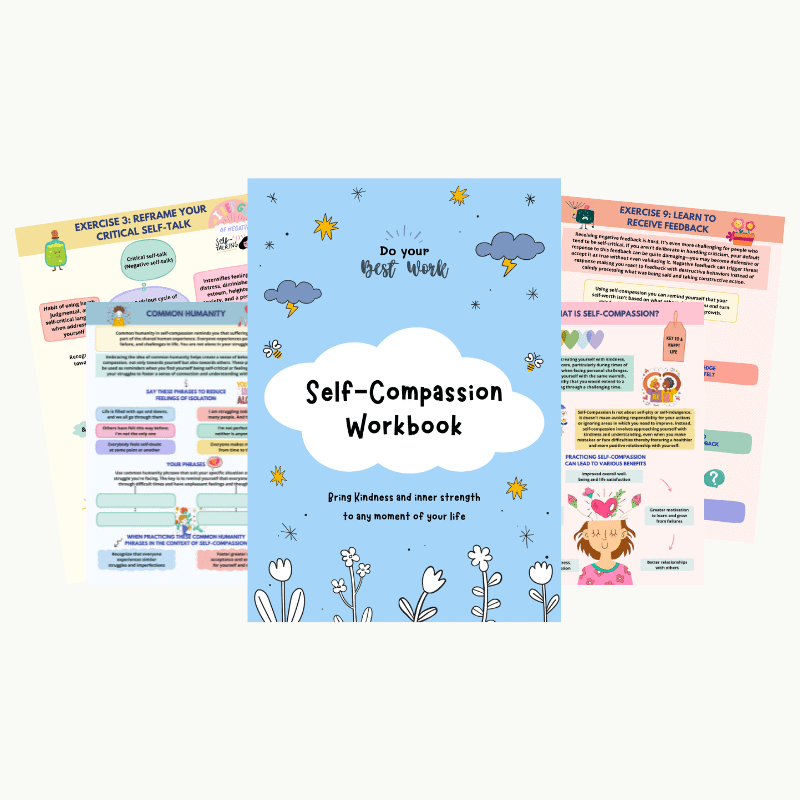
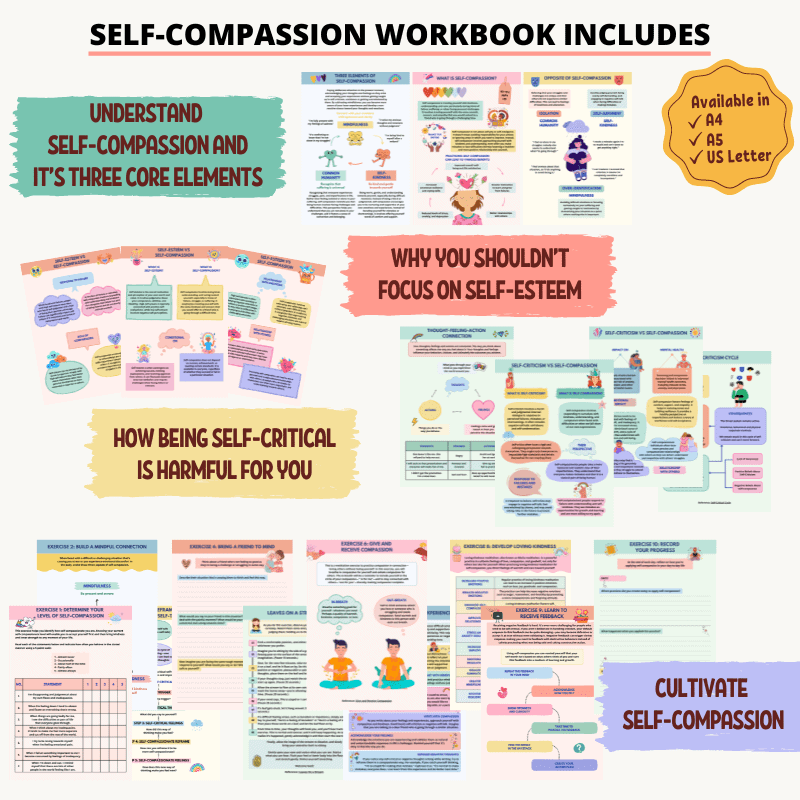
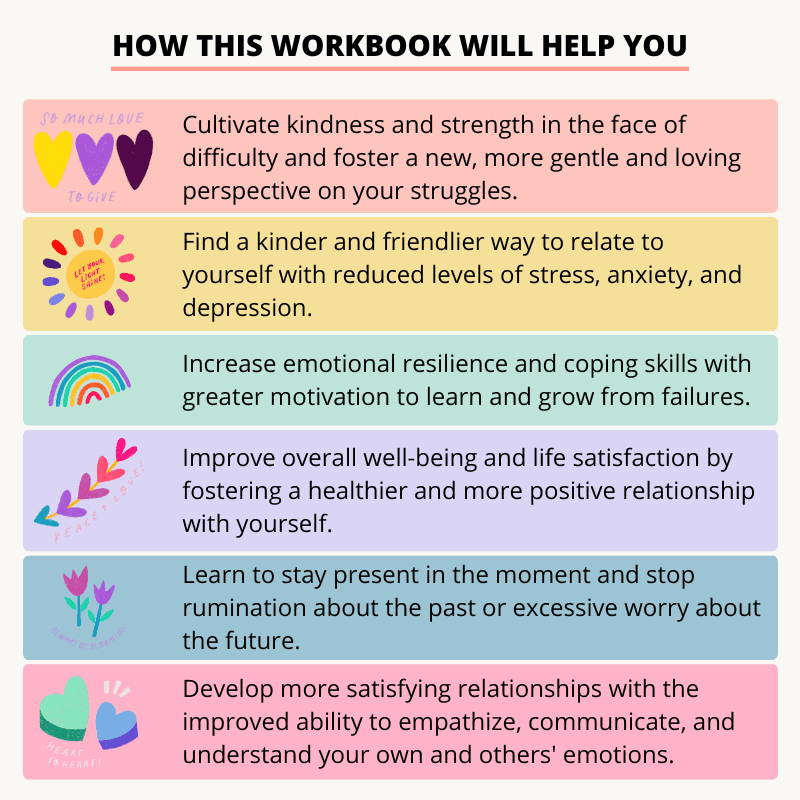
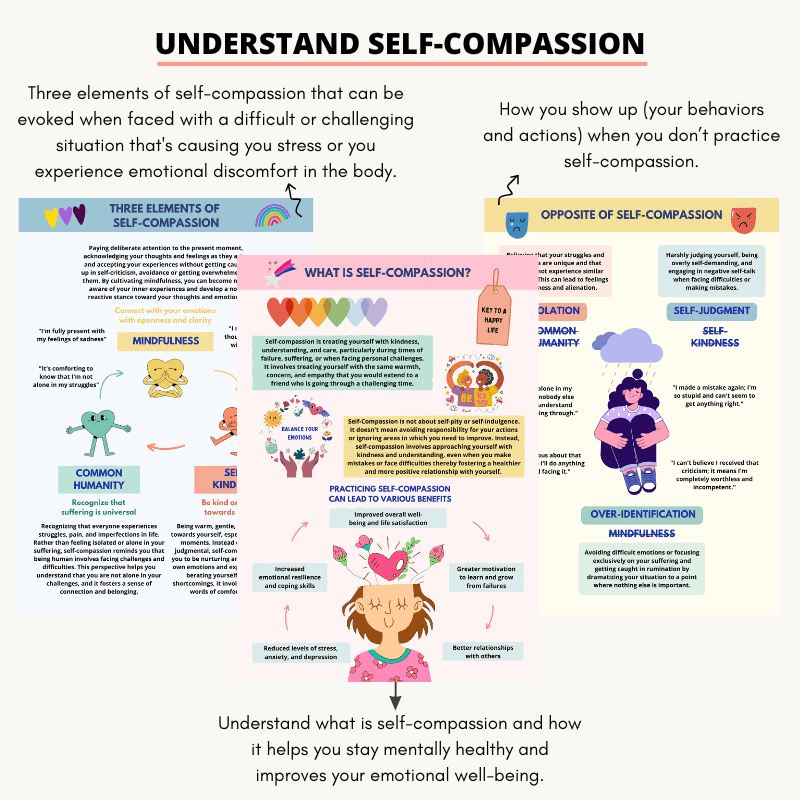
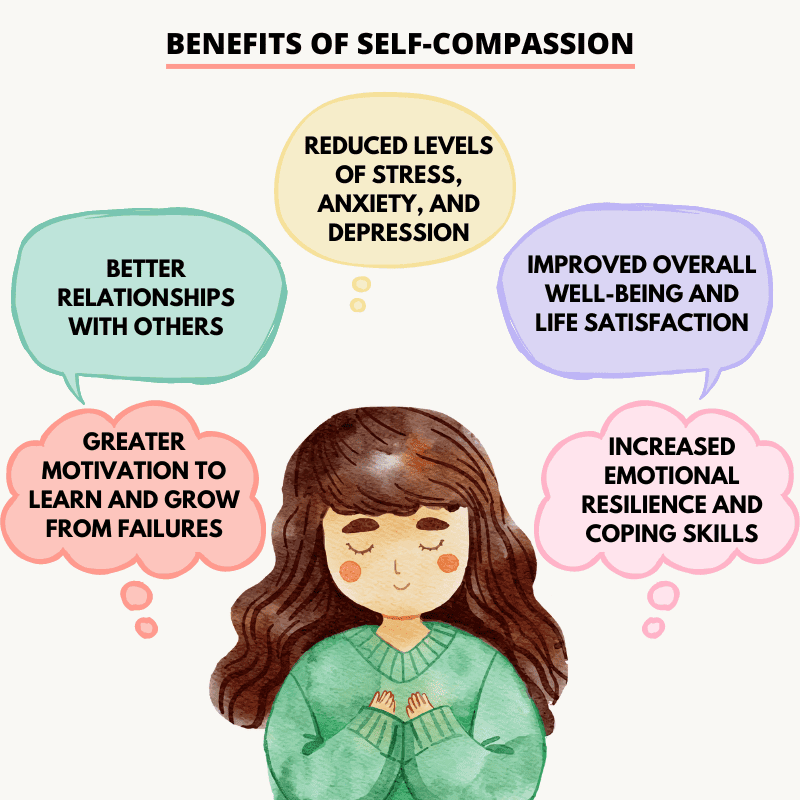
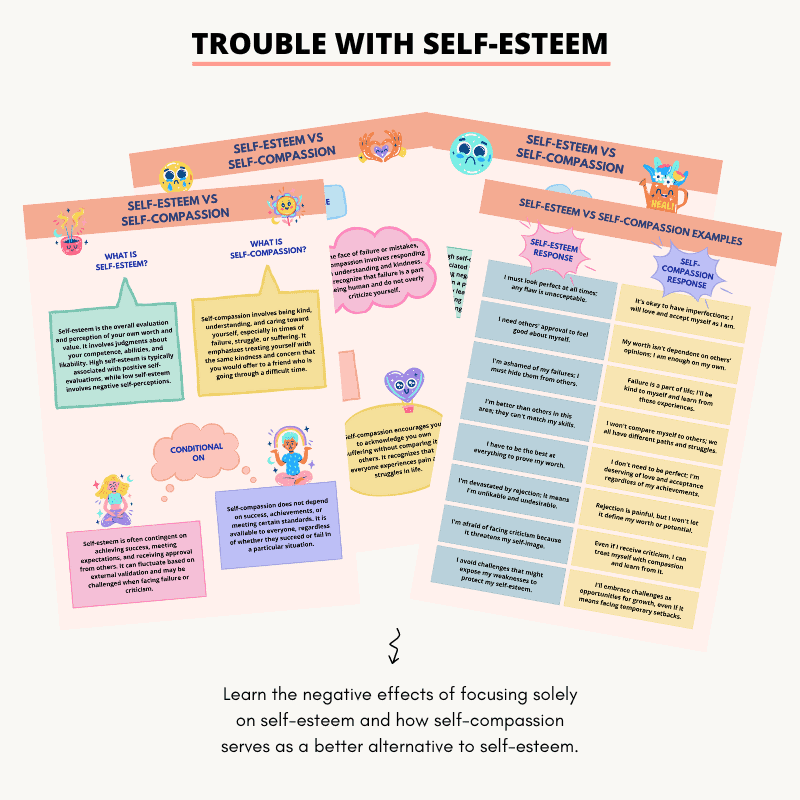
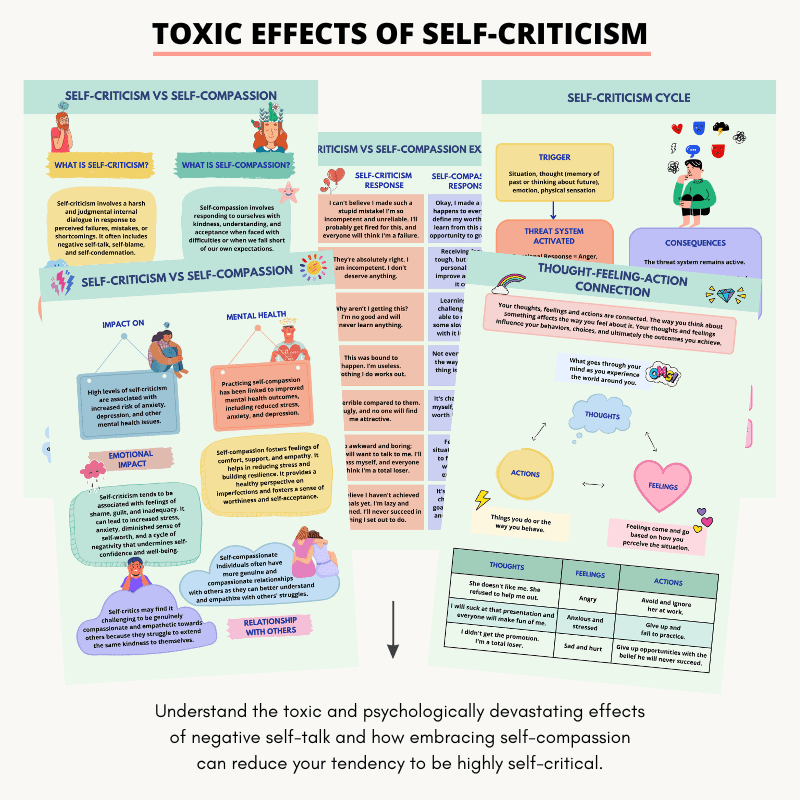
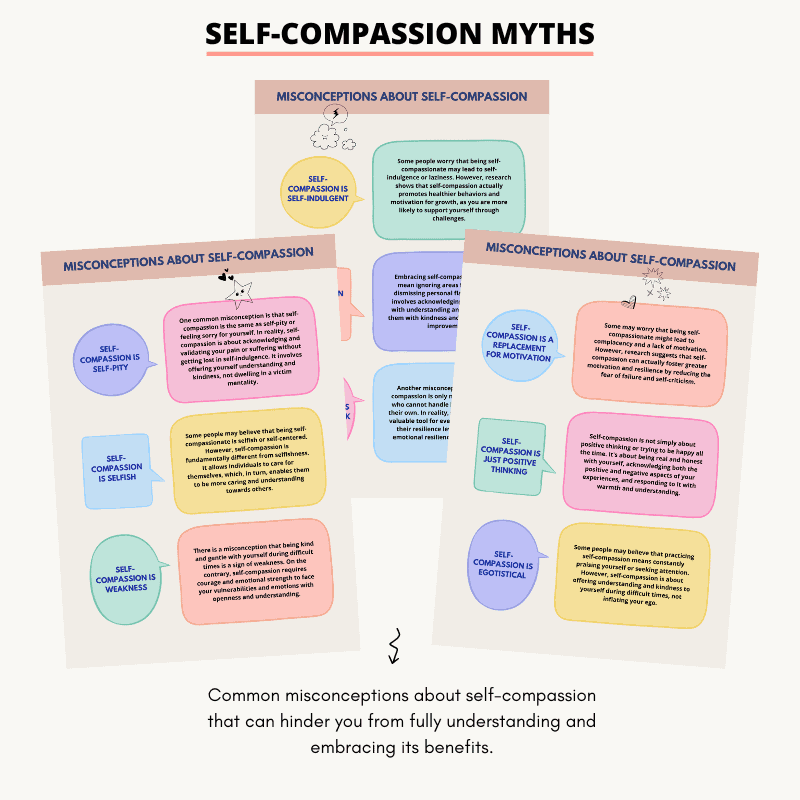
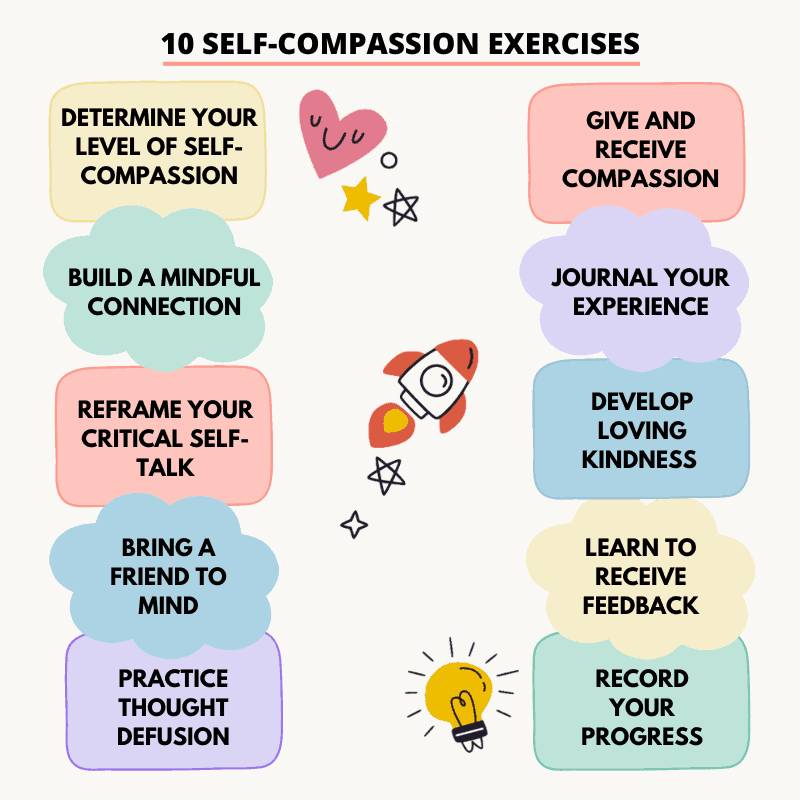
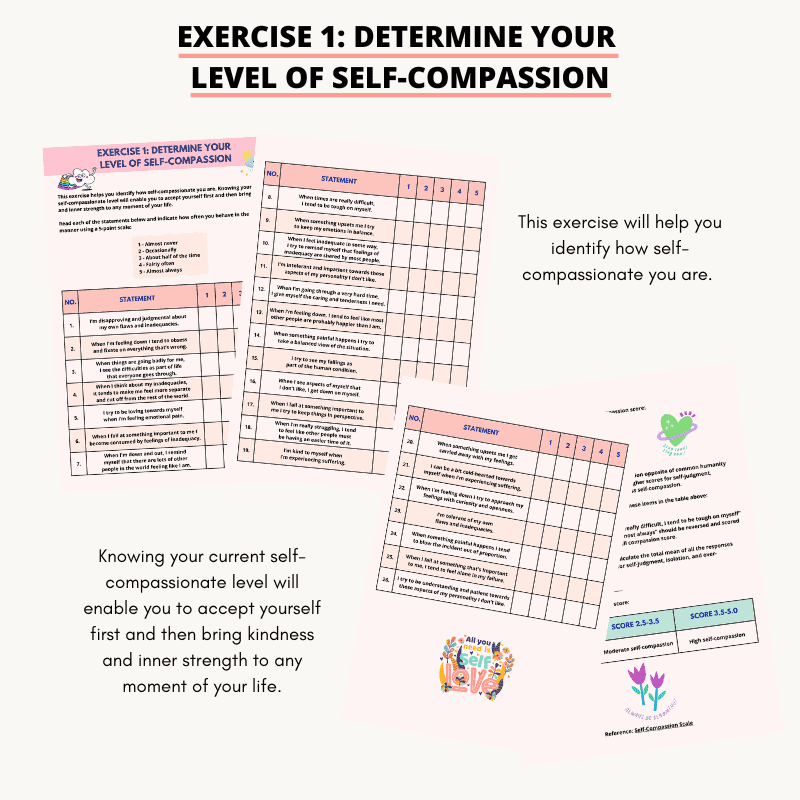
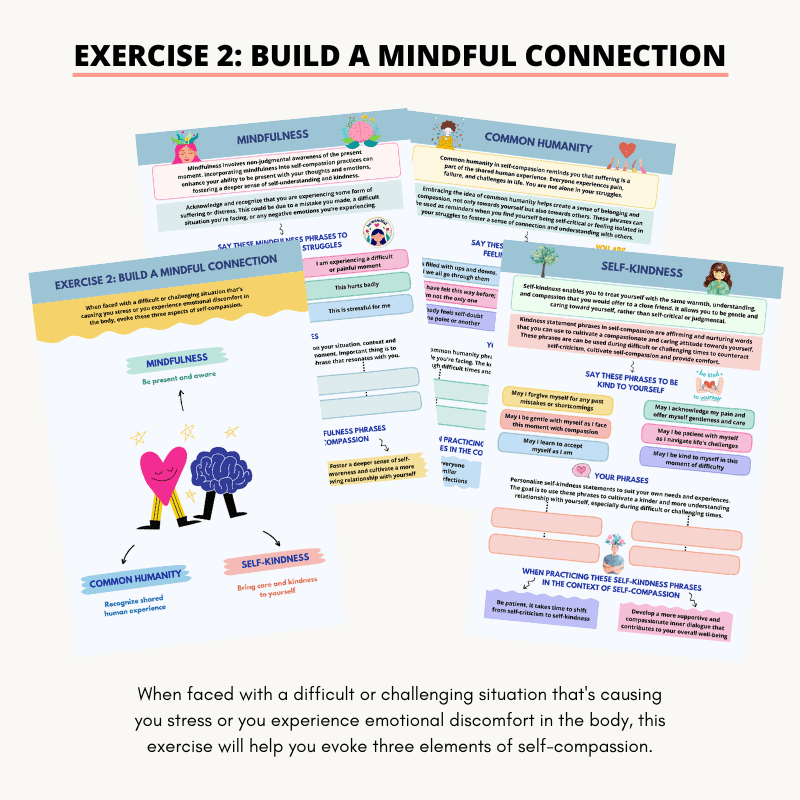
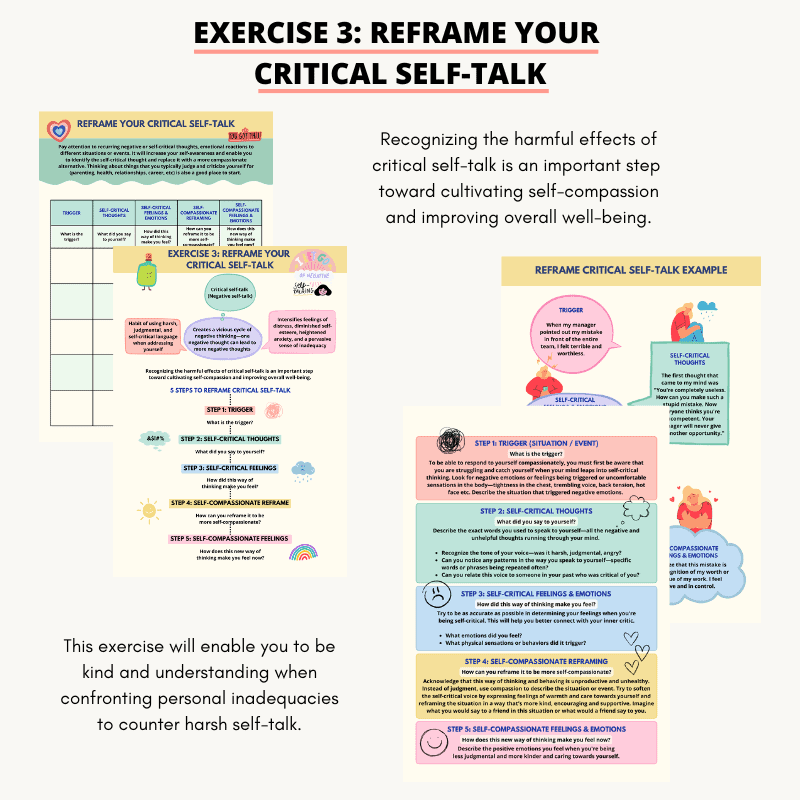
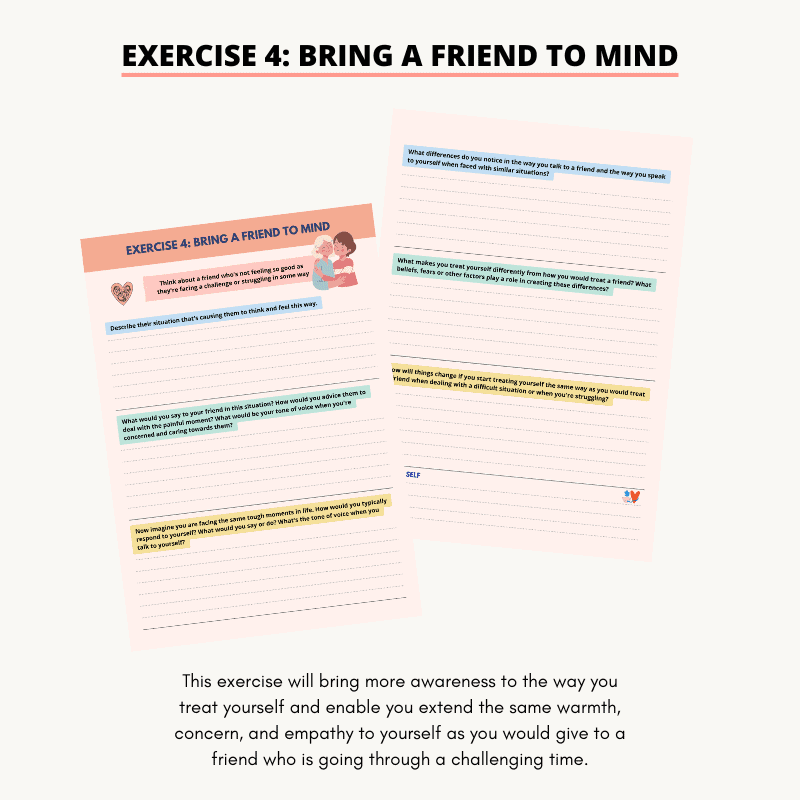
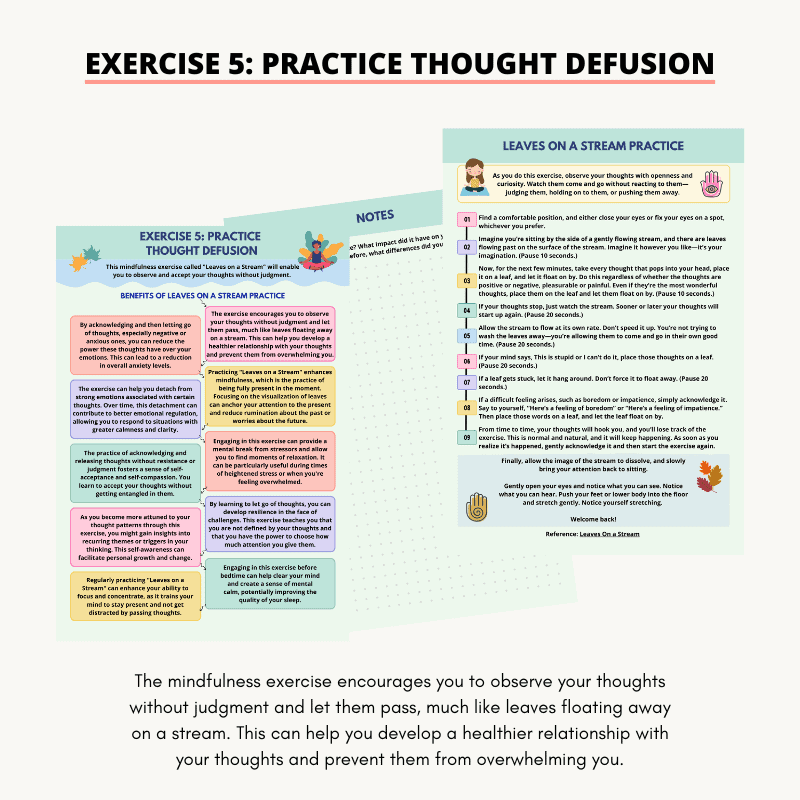
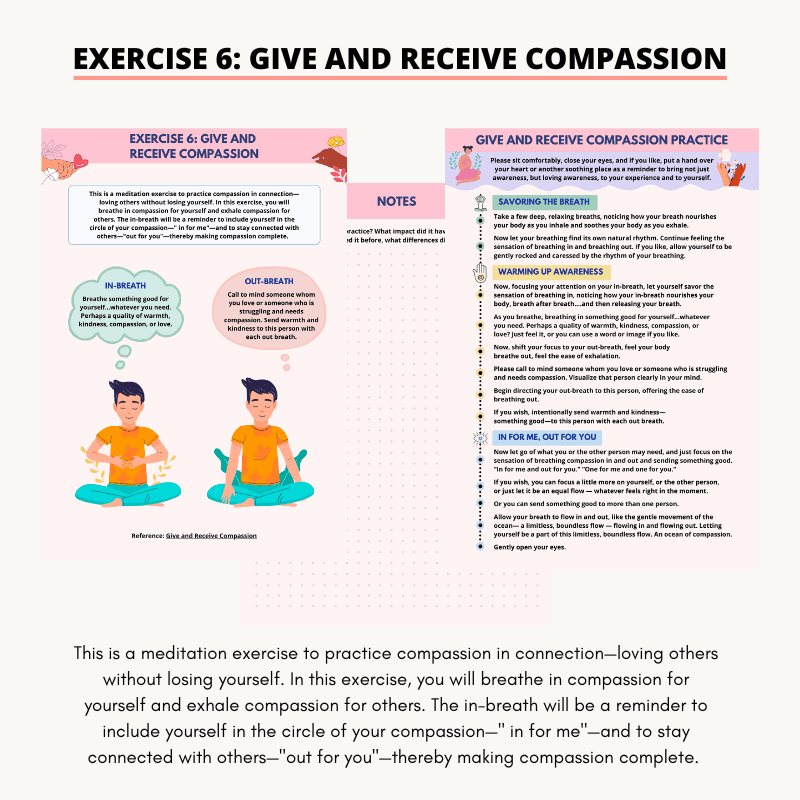
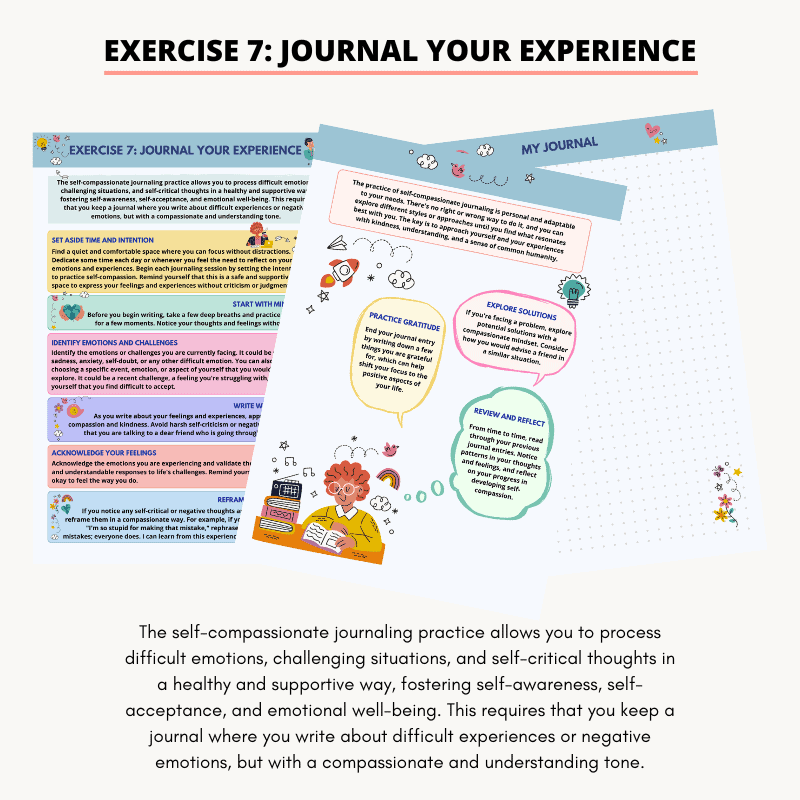
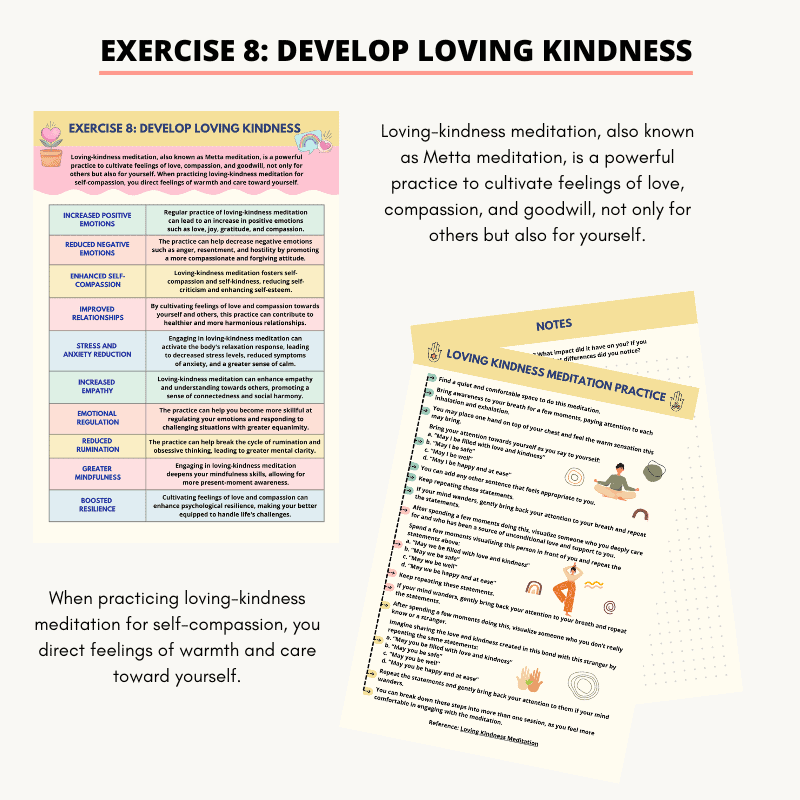
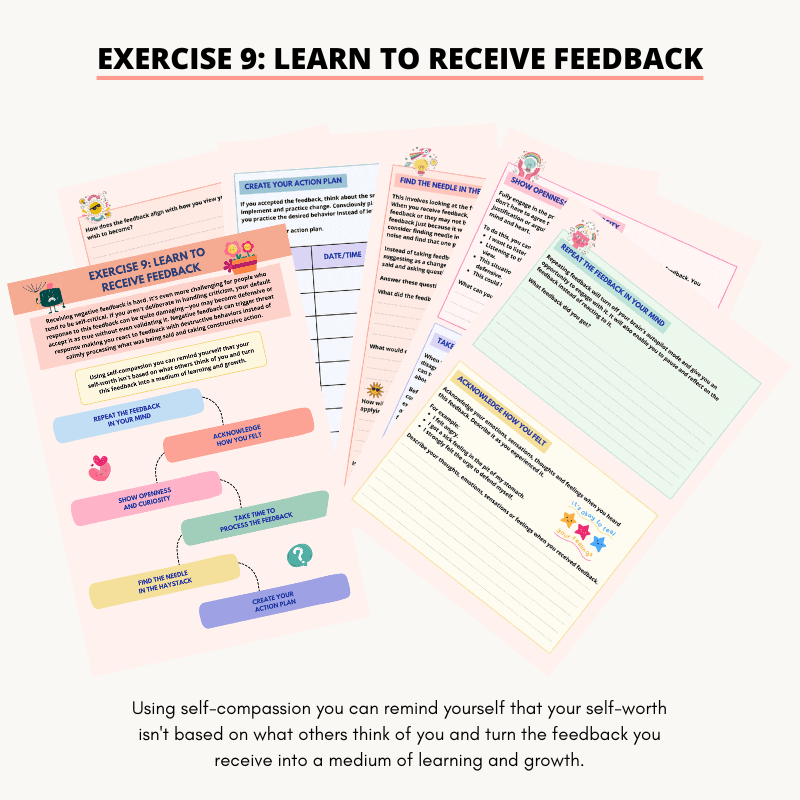
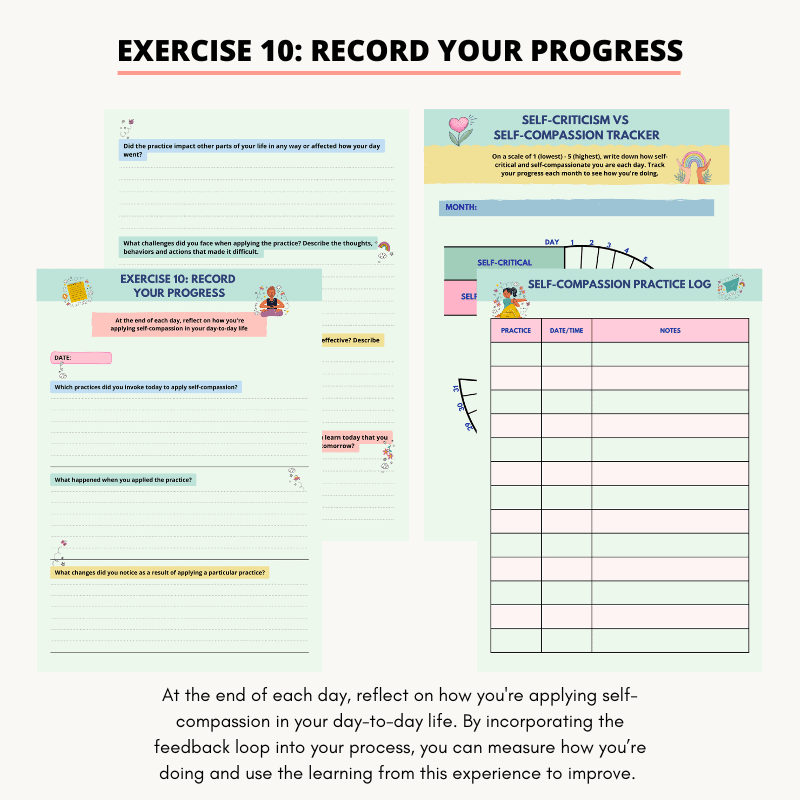
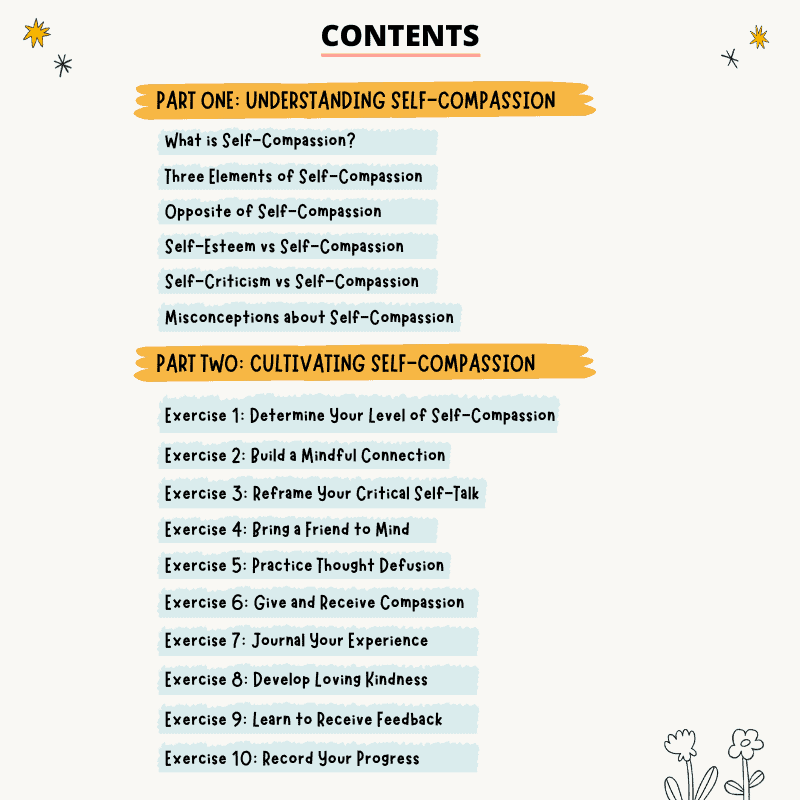
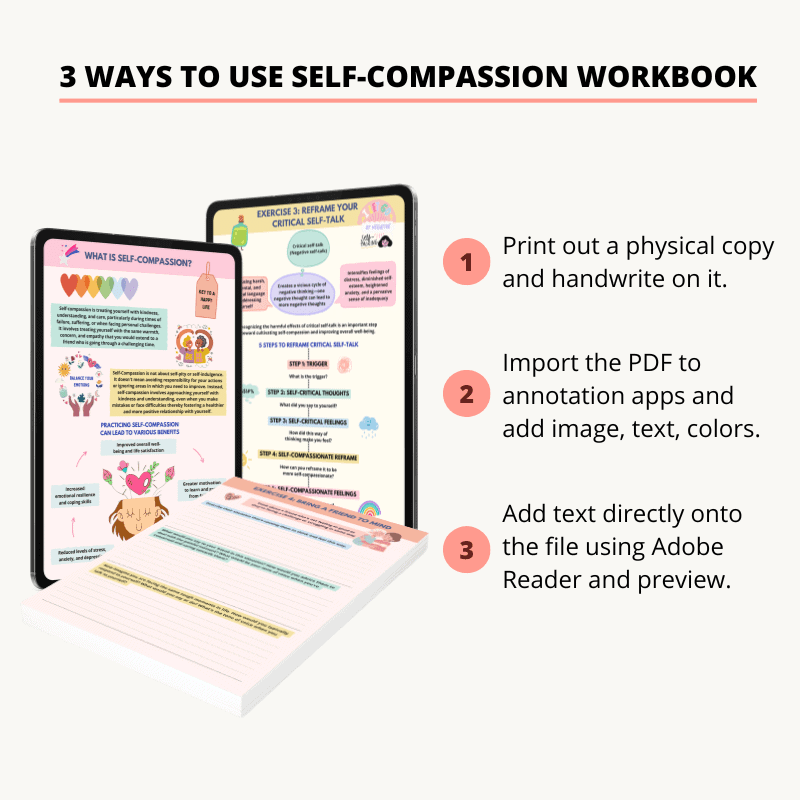
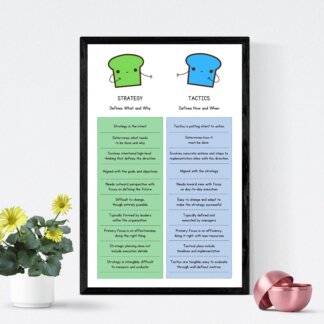

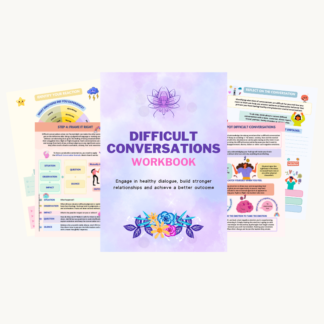
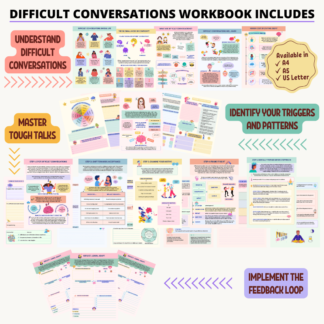


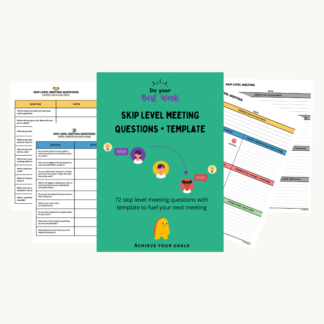

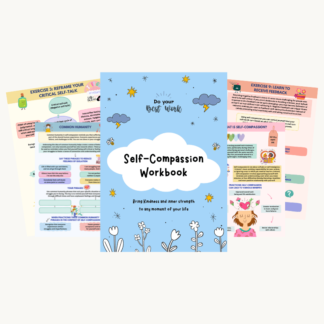
Reviews
There are no reviews yet.